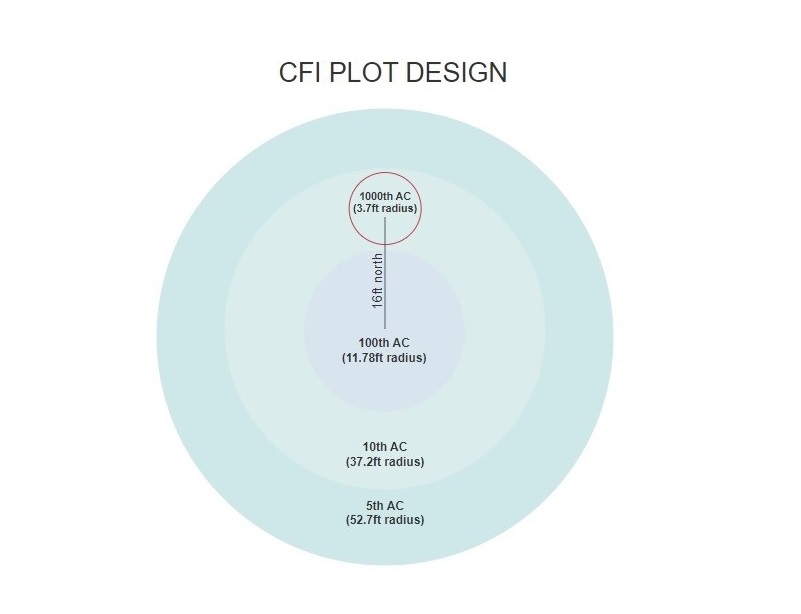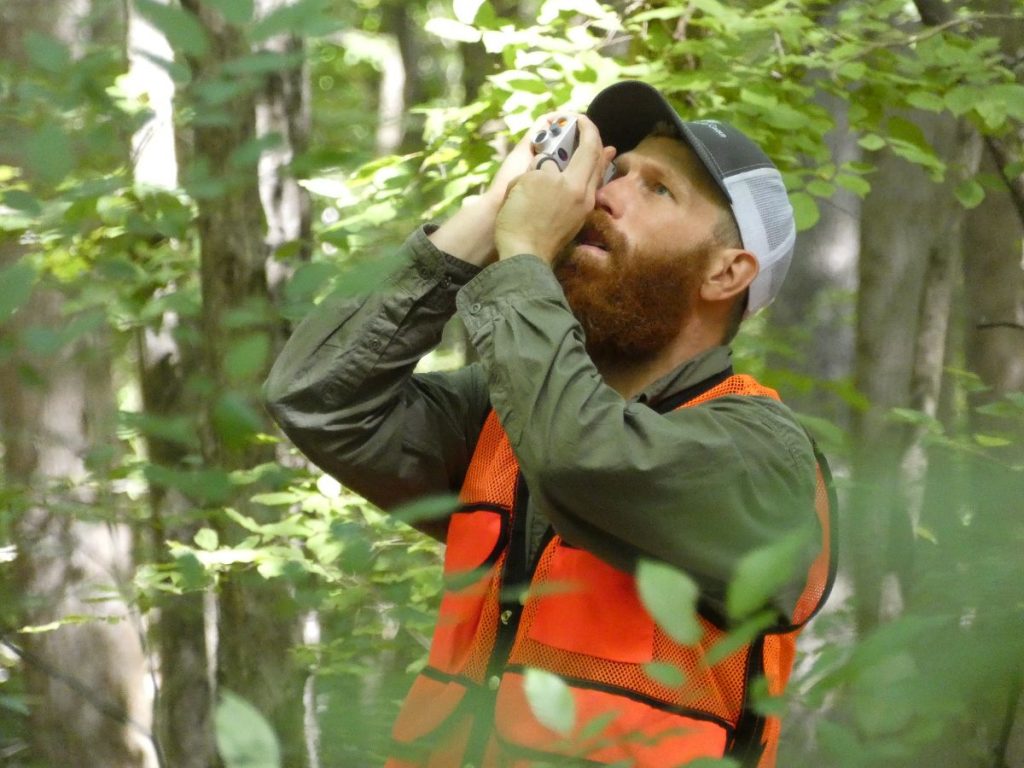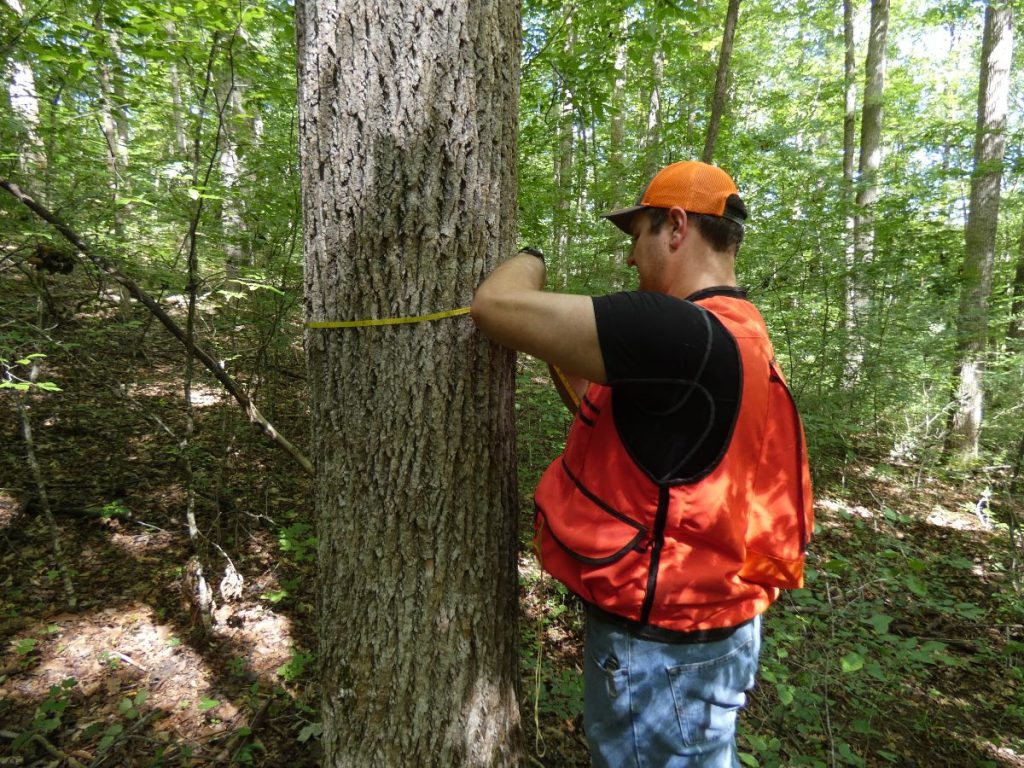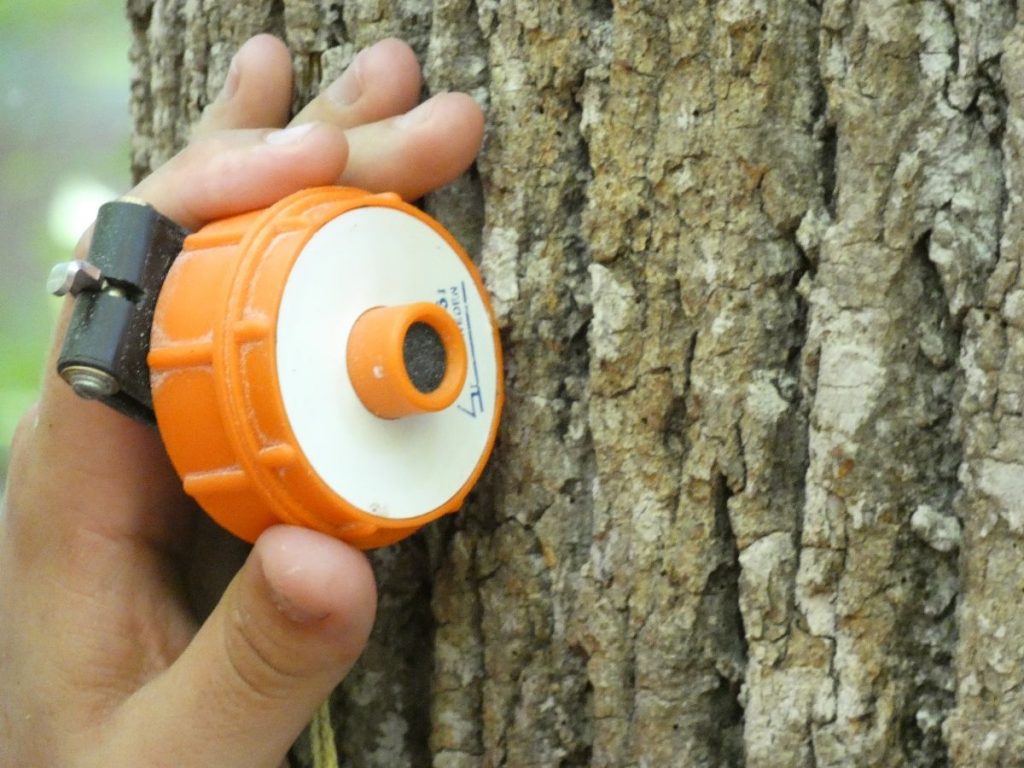Every ten years, Duke Forest performs a forest inventory to ensure that we are responsibly managing the Forest over time. The inventory focuses on measuring tree volume, growth, and regeneration, but it also allows us to collect data on issues that might be affecting the Forest such as invasive plant species and deer browse.
Before we can lace up our boots and get to data collecting, we must first update our forest cover maps, which show the dominant tree species and average age of all of our stands across our 7,050 acre forest. This involves going through all of our management records and determining where and how management operations, natural disturbances, and, simply, the forces of time have changed the forest cover. Once we have updated our cover maps, we use them to plan the sampling effort for our inventory.
For the 2019 inventory, we are transitioning to a “Continuous Forest Inventory”, or CFI, which means that we are establishing permanent sample plots throughout the forest that we will continuously monitor; though, we still only produce a formal analysis once every decade. If you look closely, you may begin to notice numbered trees throughout the Forest.

Moving to this type of inventory allows students to compare modeled growth with actual growth and allows our forest managers to refine management models and strategies within a more actionable time frame. In addition, since these inventory plots will be permanent, they can be leveraged for other types of remote-sensing analyses and long-term ecological research.
Stay tuned for our 2019 LOG annual report/newsletter coming out this fall for a more thorough update on this process.









